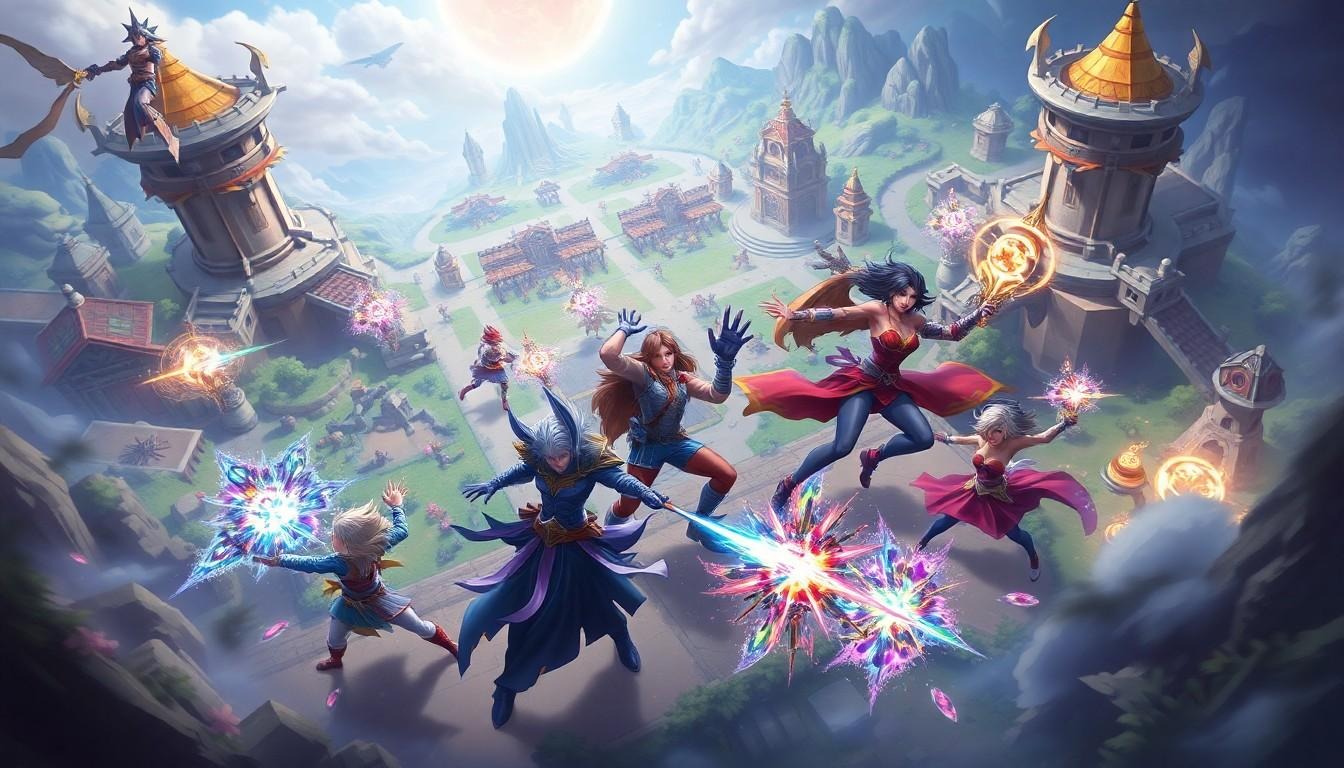Phone:
(701)814-6992
Physical address:
6296 Donnelly Plaza
Ratkeville, Bahamas.

In the world of gaming, acronyms are like secret codes that unlock entire universes of excitement. One such gem is MOBA, a term that’s become a buzzword among gamers everywhere. But what does it really mean? If you think it’s just another random collection of letters, think again. MOBA stands for Multiplayer Online Battle Arena, and it’s the gateway to some of the most thrilling and competitive gaming experiences out there.
Imagine diving into a digital battlefield where strategy and teamwork reign supreme. Whether you’re coordinating with friends or plotting against foes, the MOBA genre offers endless opportunities for fun and chaos. So, grab your favorite snack and get comfy, because understanding the MOBA acronym is just the beginning of an epic adventure that’ll have you shouting “I need more mana!” in no time.
MOBA stands for Multiplayer Online Battle Arena. This genre emphasizes teamwork and strategy, captivating millions worldwide.
MOBA games combine elements from real-time strategy games and traditional multiplayer online competition. The term emerged in the early 2000s, evolving from modded maps like Defense of the Ancients for WarCraft III, which laid the groundwork. Developers recognized the potential for large-scale battles where teams faced off in a structured environment. Companies like Riot Games and Valve popularized this genre with titles like League of Legends and Dota 2, respectively. The focus remains on player-versus-player interactions, fostering a dynamic gaming experience that prioritizes skill and strategy.
MOBAs gained immense popularity within gaming culture over the past two decades. Statistics indicate that millions of players engage daily in this genre. Live tournaments attract large audiences, with events like The International showcasing top players worldwide. The social aspect plays a crucial role, as players form teams, communicate, and strategize together. In addition, streaming platforms like Twitch catapulted the popularity of MOBAs, allowing fans to watch skilled players in action. Overall, this genre’s competitive nature and community-driven environments solidify its place in contemporary gaming culture.

MOBA games excel in engaging players through dynamic competition and strategic collaboration. Their structure relies heavily on teamwork and individual skill.
Players compete in teams, typically consisting of five members, against another team. Each participant selects a unique character, often referred to as a hero or champion. This selection process fosters diverse play styles and strategies. Coordination between teammates becomes essential for success, requiring communication and quick decision-making. Match length averages around 30 to 40 minutes, providing a fast-paced environment. Players progress through the game by leveling up their characters and defeating enemy forces. The social aspect enhances engagement, as players form lasting friendships and rivalries through shared experiences.
Strategy shapes every aspect of MOBA gameplay, influencing team composition and individual tactics. Players must manage resources effectively, balancing offensive and defensive strategies. This genre often emphasizes objective-based gameplay, where teams focus on goals rather than simply eliminating opponents. Map awareness plays a crucial role, as understanding terrain advantages can lead to victory. Each character possesses unique abilities, encouraging synergy among team members. Players adapt strategies in real time, responding to the evolving game state and enemy actions. The combination of tactical foresight and teamwork defines the MOBA experience, keeping players captivated and challenged.
Numerous MOBA games have captivated audiences and established themselves in the gaming community. Two of the most prominent titles include League of Legends and Dota 2.
League of Legends, developed by Riot Games, launched in 2009. This game features over 150 champions, each possessing unique abilities that encourage strategic synergy among players. Matches typically last 30 to 50 minutes and are played in teams of five. Players aim to destroy the opposing team’s Nexus while managing resources and objectives. Regular updates and seasonal events keep the gameplay fresh, maintaining its immense player base. Its competitive esports scene draws millions of viewers, with events like the World Championship showcasing top-tier talent.
Dota 2, developed by Valve Corporation, debuted in 2013 as a sequel to the original Defense of the Ancients mod. This game also features a roster of over 100 heroes, each contributing distinct play styles and strategies. Matches average between 30 and 60 minutes, where two teams of five aim to demolish the enemy Ancient. Players emphasize teamwork and tactical decision-making under pressure. The International, Dota 2’s premier esports tournament, offers multi-million dollar prize pools, attracting global competitors and enthusiasts. Regular updates and community-driven content keep engagement high, solidifying its status within the MOBA genre.
The MOBA genre significantly influences gaming culture and design. Community engagement forms a core part of this impact, connecting millions of players.
Players form teams to strategize and collaborate, which strengthens community bonds. Competitive esports events attract large audiences, with tournaments offering significant prize pools. For example, The International features multi-million dollar rewards, drawing enthusiasts worldwide. Fans actively support their favorite teams and players through streaming platforms, which elevate visibility. Social media interaction enhances fan engagement, allowing real-time discussions and analysis of gameplay. This connected experience not only fosters loyalty but also encourages new players to join the community. Esports organizations now invest in academies, developing emerging talent and expanding the player pool.
Game design has evolved due to the popularity of MOBAs. Developers now prioritize teamwork and strategy-driven gameplay within various genres. The demand for diverse characters often leads to innovative abilities and mechanics, enhancing replayability. Many games incorporate similar features, such as character selection, objective management, and skill upgrades. Strategy is emphasized in player vs. environment (PvE) games, encouraging coordinated team efforts. Mobile gaming also benefits from MOBA mechanics, attracting a broader audience. The genre’s success encourages developers to refine matchmaking systems, focusing on player experience. This focus results in balanced gameplay and responsive design choices that adapt to player feedback.